
|
FEATool Multiphysics
v1.17.5
Finite Element Analysis Toolbox
|

|
FEATool Multiphysics
v1.17.5
Finite Element Analysis Toolbox
|
This validation test case models temperature loading of a tapered hollow thick cylinder with a spherical bottom flange section. The solid object is assumed to be clamped vertically, but allowed to expand horizontally due to a linear temperature gradient. The stress in the z-direction at the bottom inner point is computed and compared to a reference value [1].
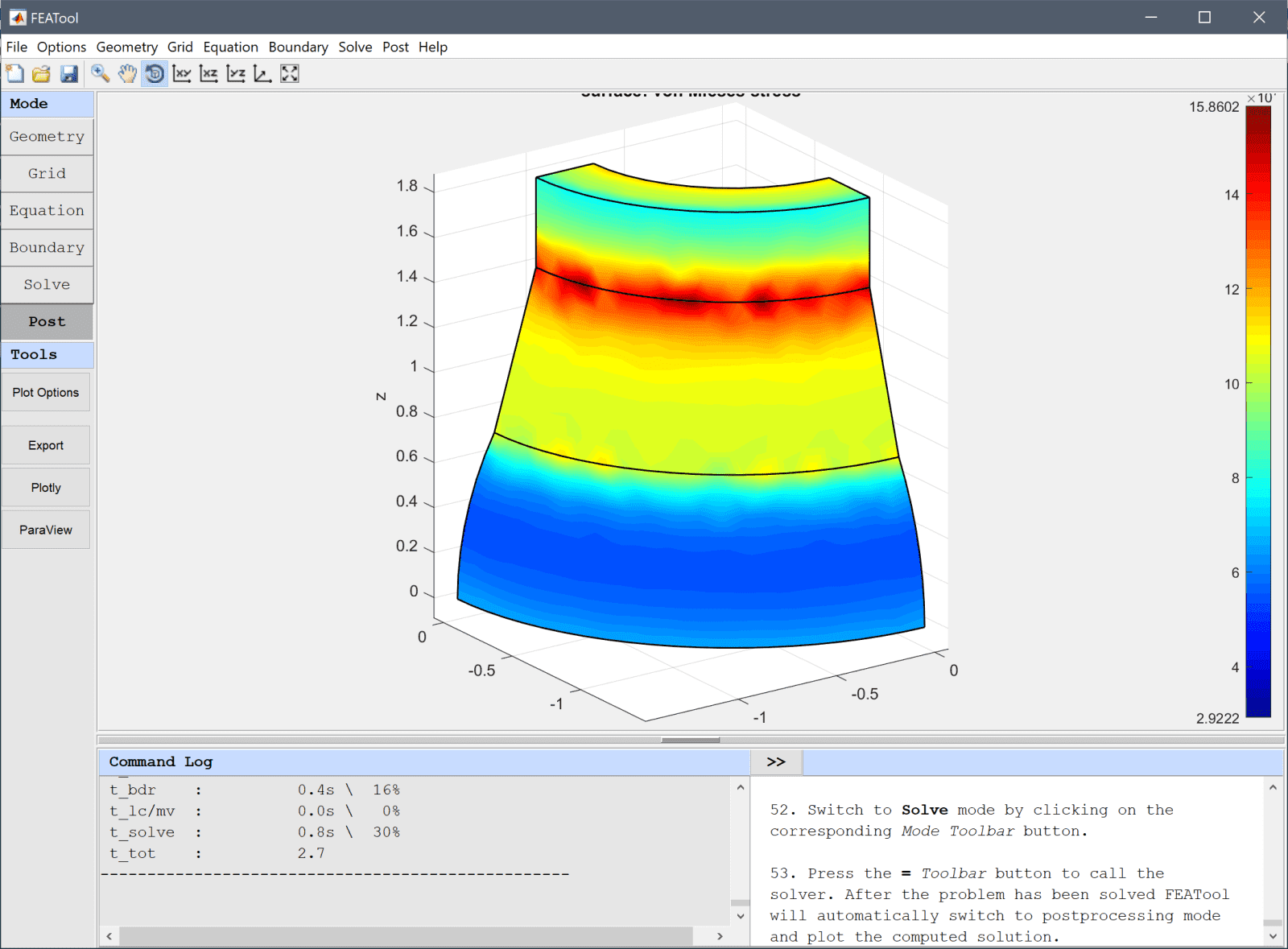
This model is available as an automated tutorial by selecting Model Examples and Tutorials... > Structural Mechanics > Temperature Loading of a Tapered Cylinder from the File menu, viewed as a video tutorial, or alternatively, follow the step-by-step instructions below.
Select the Linear Elasticity physics mode from the Select Physics drop-down menu.
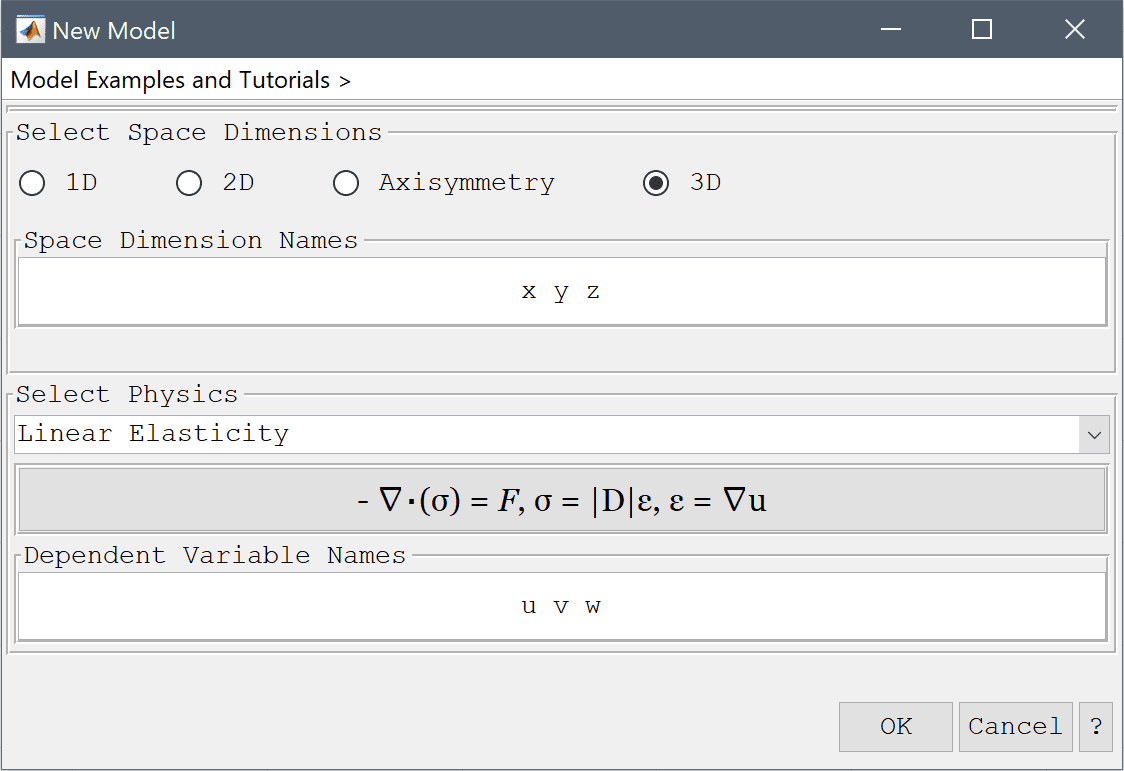
The geometry consists of a thick cylindrical pipe section connected to a spherical bottom flange with a taper. As the geometry is axially symmetric, it is easiest to create by first using a 2D workplane to draft the cross-section, which then can be revolved into the three dimensional space.
Workplanes are defined by a point (local origin), normal (blue) and tangent vectors (yellow and red). The green circle shows a preview where the plane will be located in 3D space.
0 0 0 into the Workplane point edit field.0 -1 0 into the Workplane normal vector edit field.Enter -1 0 0 into the Workplane tangent vector edit field.
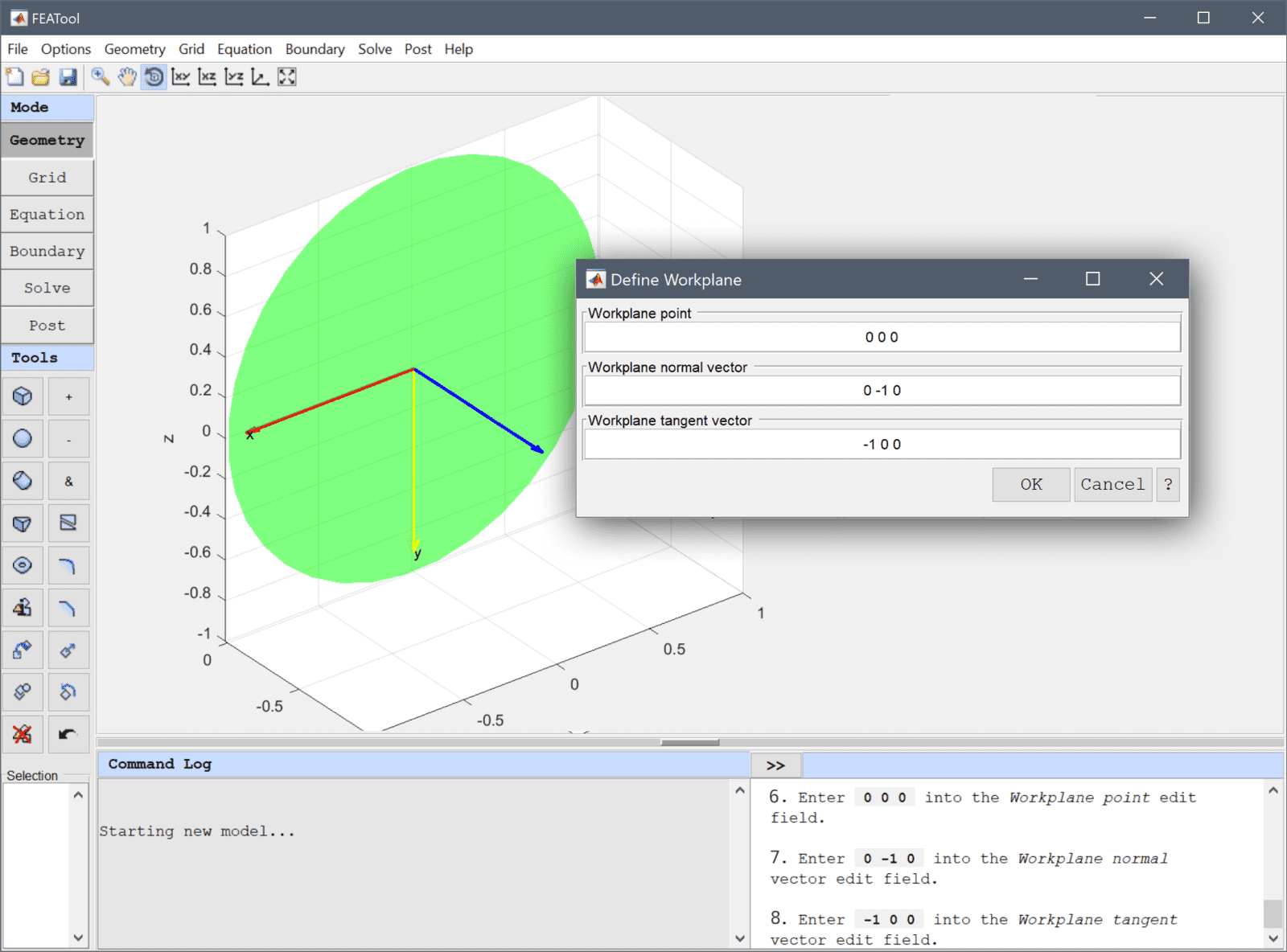
Note that the local coordinate system will be mirrored in the y-axis. The outline sketch will therefore be drawn upside down so as to be in the positive half-plane of the 3D space.
First create a rectangle to cover the modeling region.
0.7071 into the xmin edit field.1.4 into the xmax edit field.-1.79 into the ymin edit field.0 into the ymax edit field.Now create two circles, one with radius 1 and the other with 1.4.
1 into the radius edit field.1.4 into the radius edit field.Then make a polygon for the cylindrical connection.
Enter the following data into the Point coordinates table.
| x | y | |
|---|---|---|
| 1 | 0.7071 | -0.7 |
| 2 | 1.2124 | -0.7 |
| 3 | 1 | -1.39 |
| 4 | 1 | -1.79 |
| 5 | 0.7071 | -1.79 |
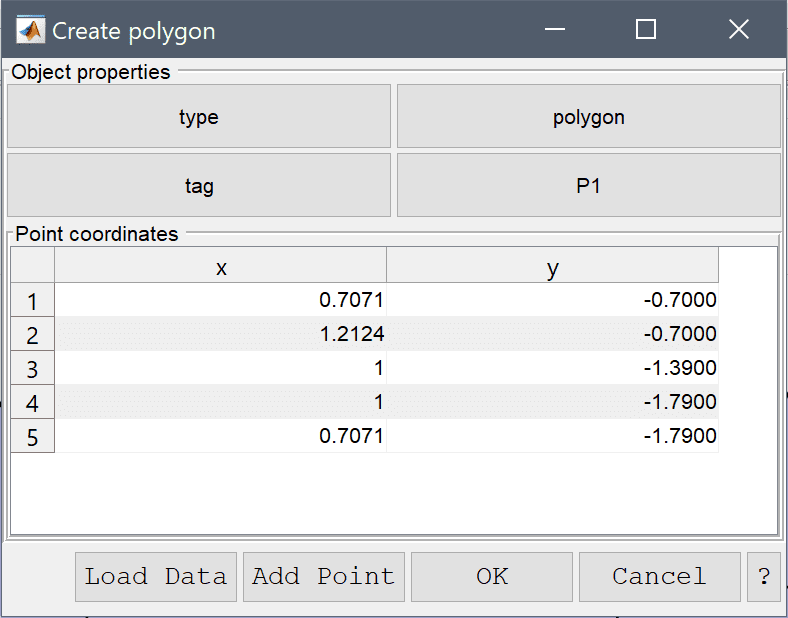
The shape of the cross-section can be created by joining the polygon with the outer circle, subtracting the inner circle, and taking the intersection with the rectangle.
Select C2 and P1 in the geometry object Selection list box.
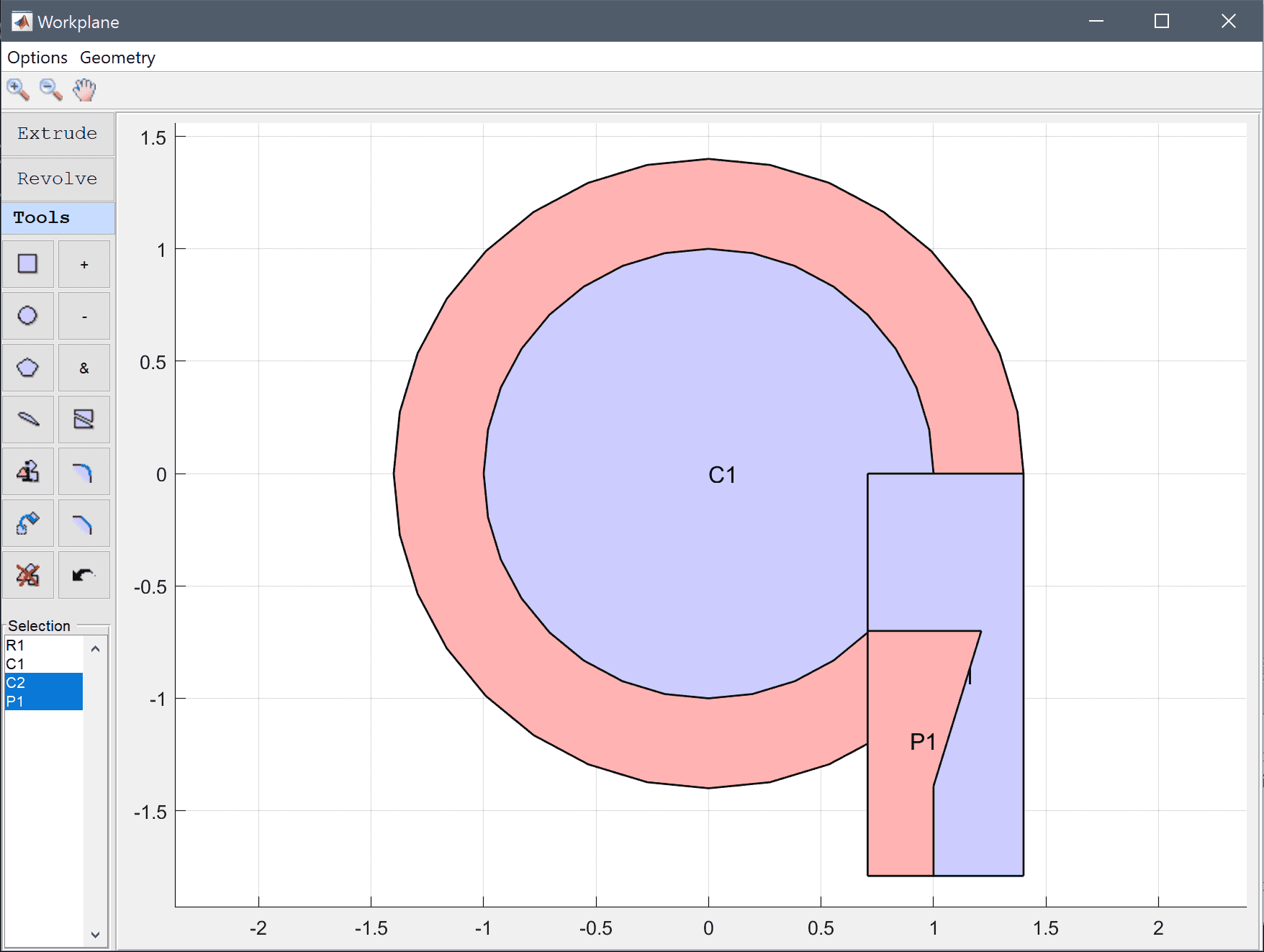
Press the & button.
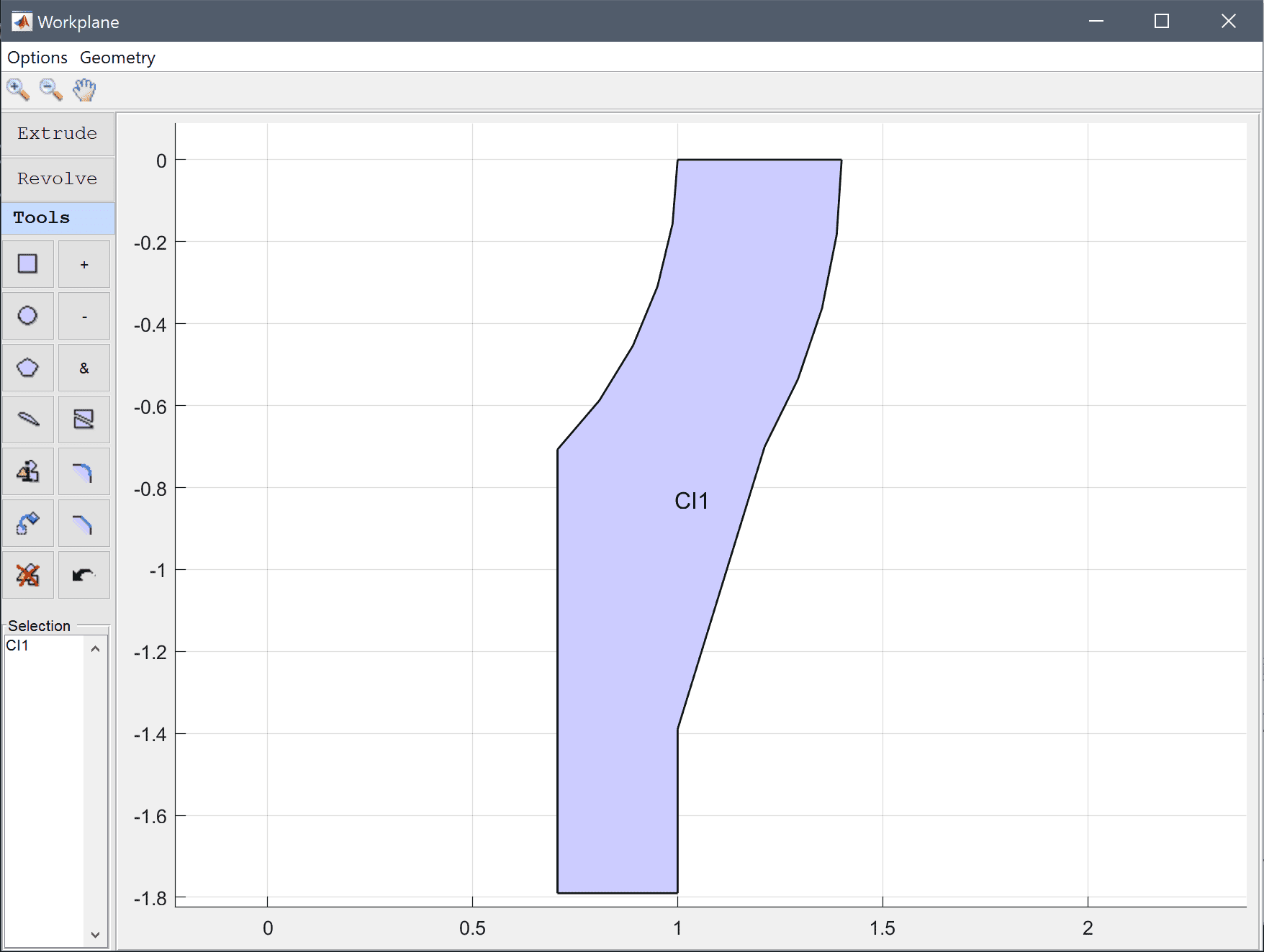
The 2D outline sketch can now be revolved to a 3D solid (an outline preview of the revolution shape is shown in the 3D view). As this geometry is symmetric it is enough to model a quarter section and thereby also reducing the mesh size leading to faster simulations.
90 into the Revolution angle edit field.0 0 0 into the Revolution axis reference point edit field.Enter 0 -1 0 into the Revolution axis vector edit field.
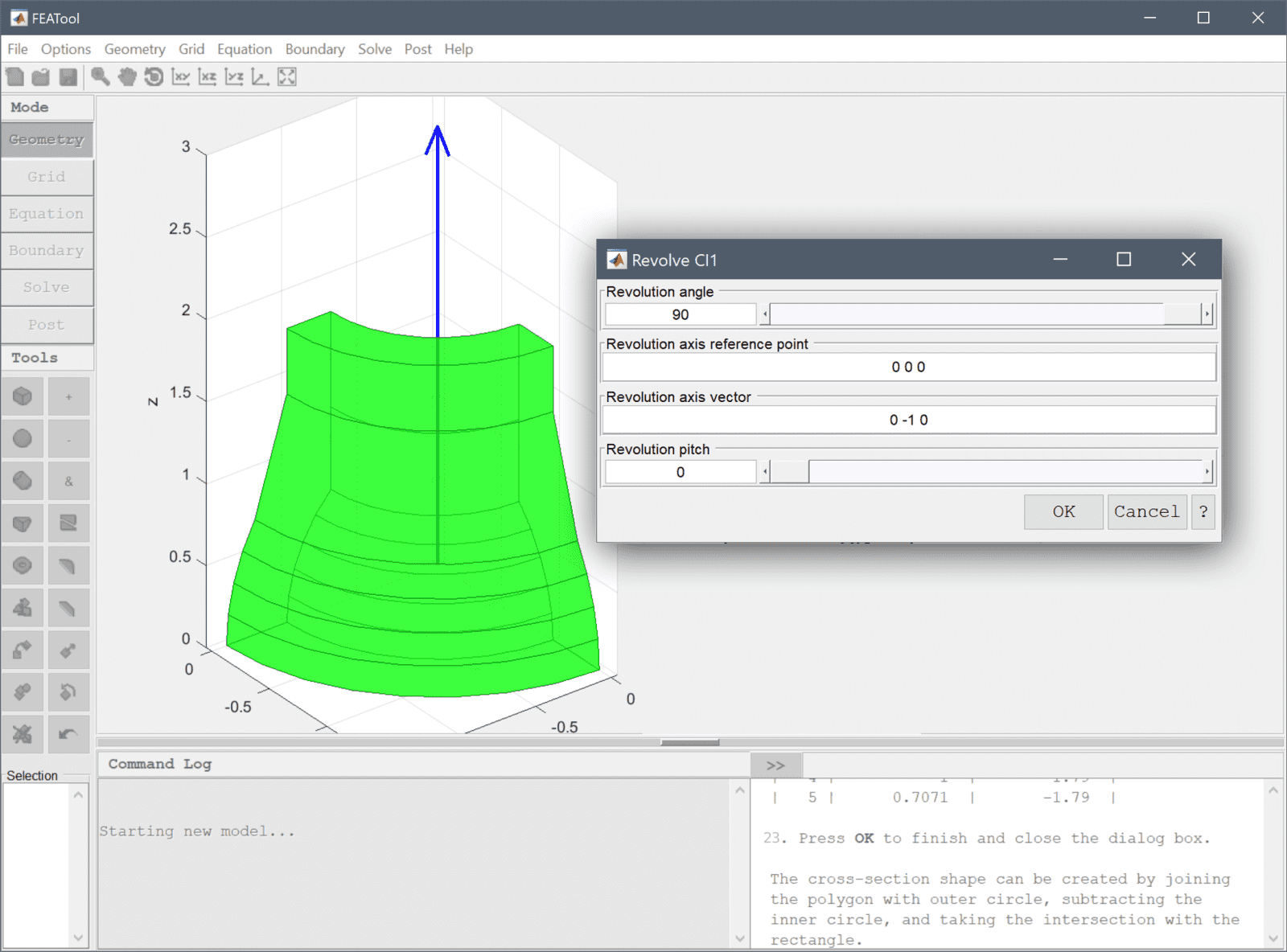
Select Close Workplane from the Options menu or press the close button in the Workplane window to go back to the main 3D modeling view.
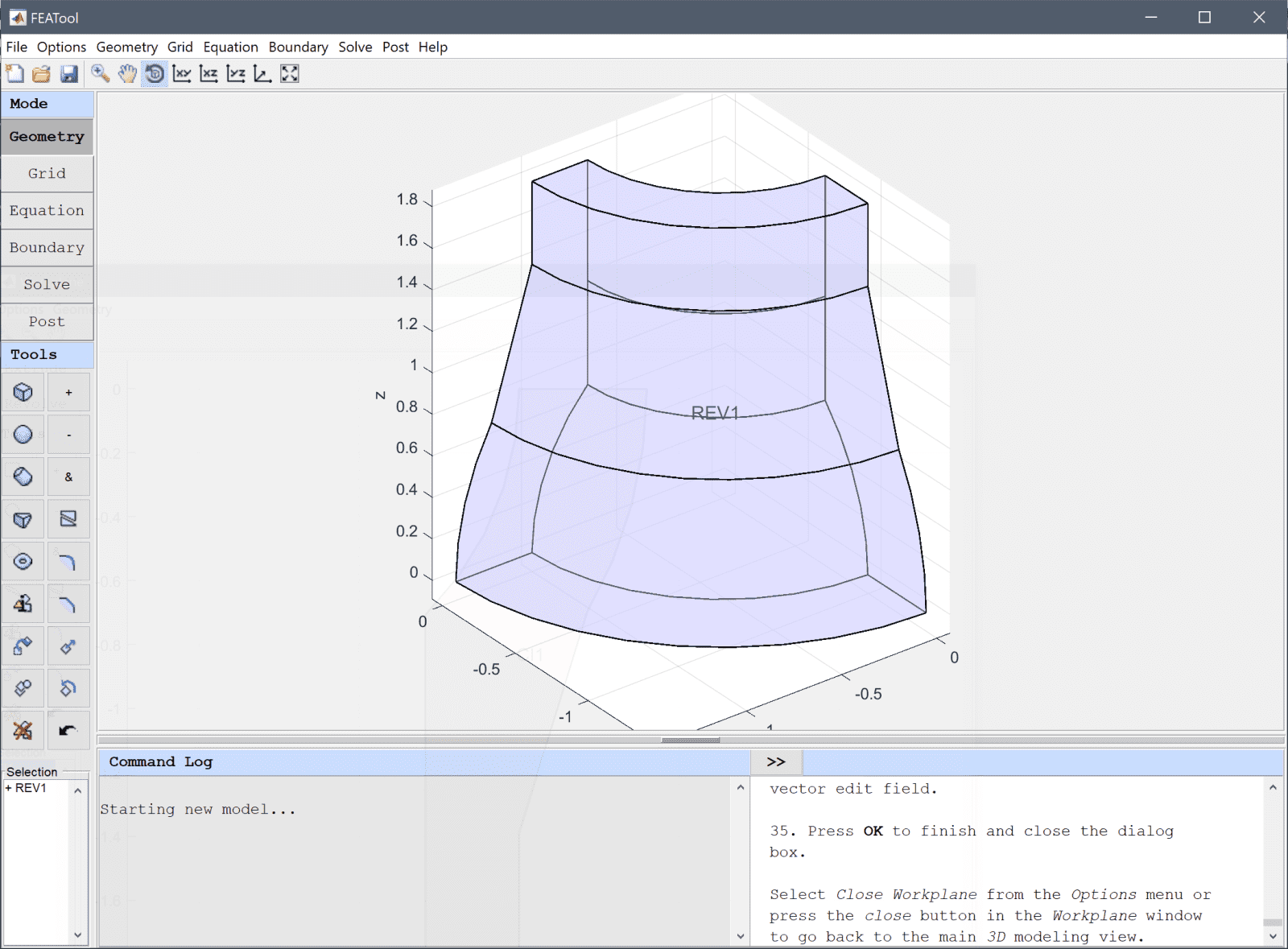
The default grid may be too coarse to ensure an accurate solution. Decrease the grid size to 0.1 to generate a finer grid that better can resolve curved boundaries.
Press the Generate button to call the automatic grid generation algorithm.
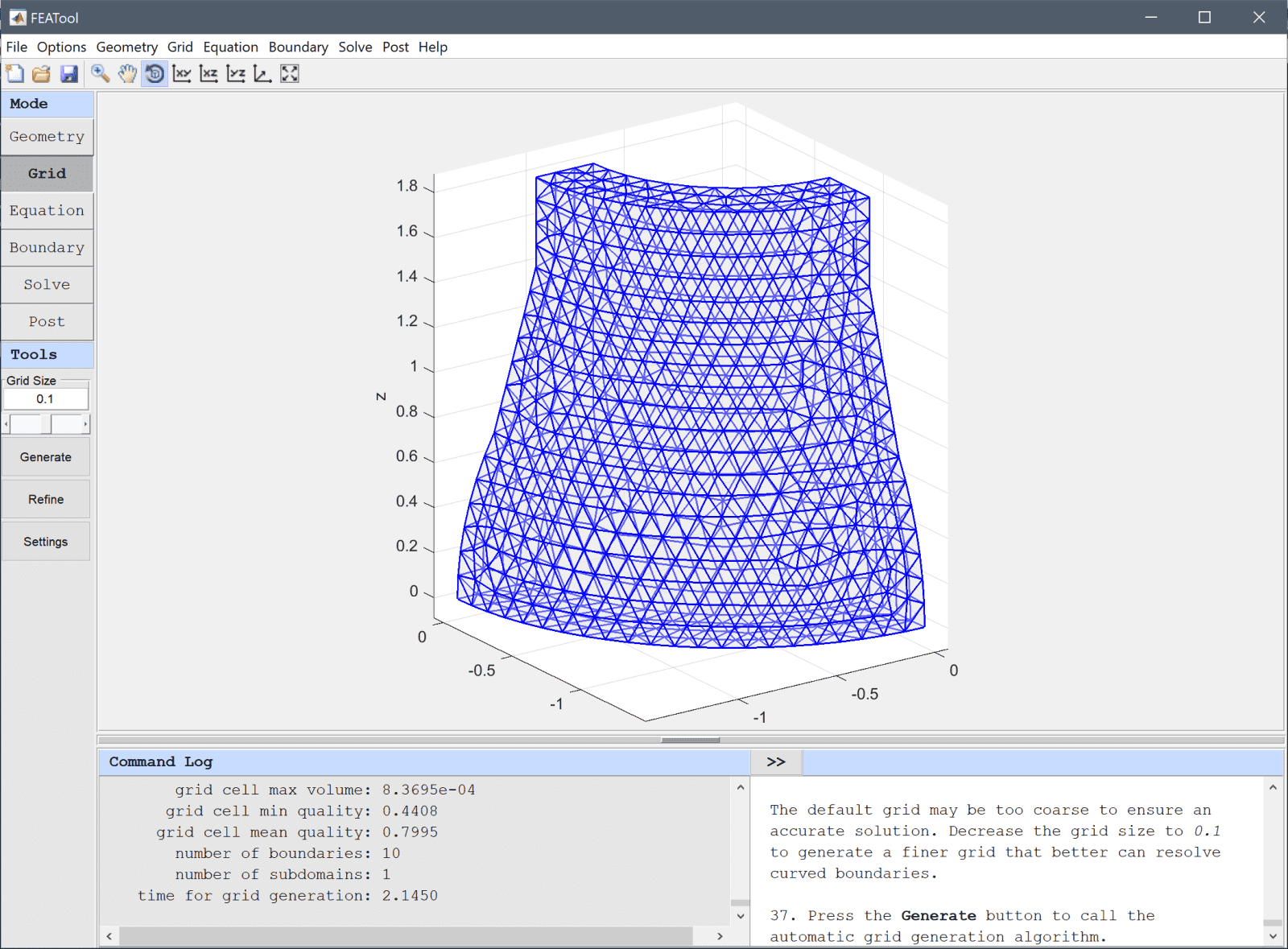
0.3 for the Poisson's ratio and 210e9 for the Modulus of elasticity.Note that FEATool works with any unit system, and it is up to the user to use consistent units for geometry dimensions, material, equation, and boundary coefficients.
The temperature load is a linear expression in the radial direction sqrt(x^2+y^2)+z, but can also be coupled through the temperature from a heat transfer physics mode.
2.3e-4 into the Thermal expansion coefficient edit field.sqrt(x^2+y^2)+z into the Temperature edit field.As the quantities of interest here are stresses, it is appropriate to use a higher order discretization. This will result in more accurate evaluation of quantities involving derivatives of the solution variables such as stresses.
Select (P2/Q2) second order conforming from the FEM Discretization drop-down menu.
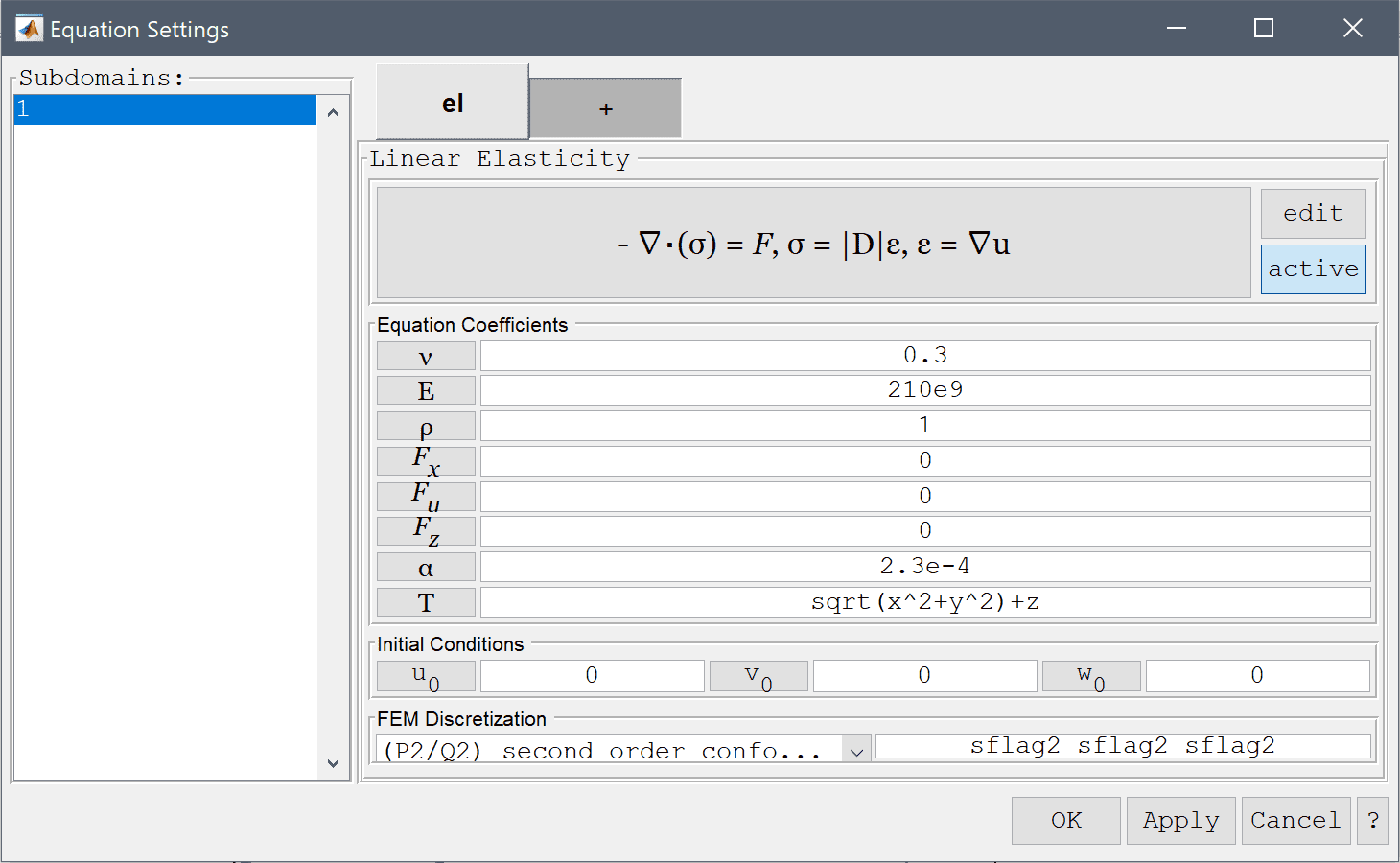
The two side boundaries are due to symmetry, and should therefore have their displacements constrained in the corresponding normal directions.
The solid should be clamped in the vertical direction, that is the z-displacement at the top and bottom boundaries should be fixed.
Select the Fixed displacement, w radio button.
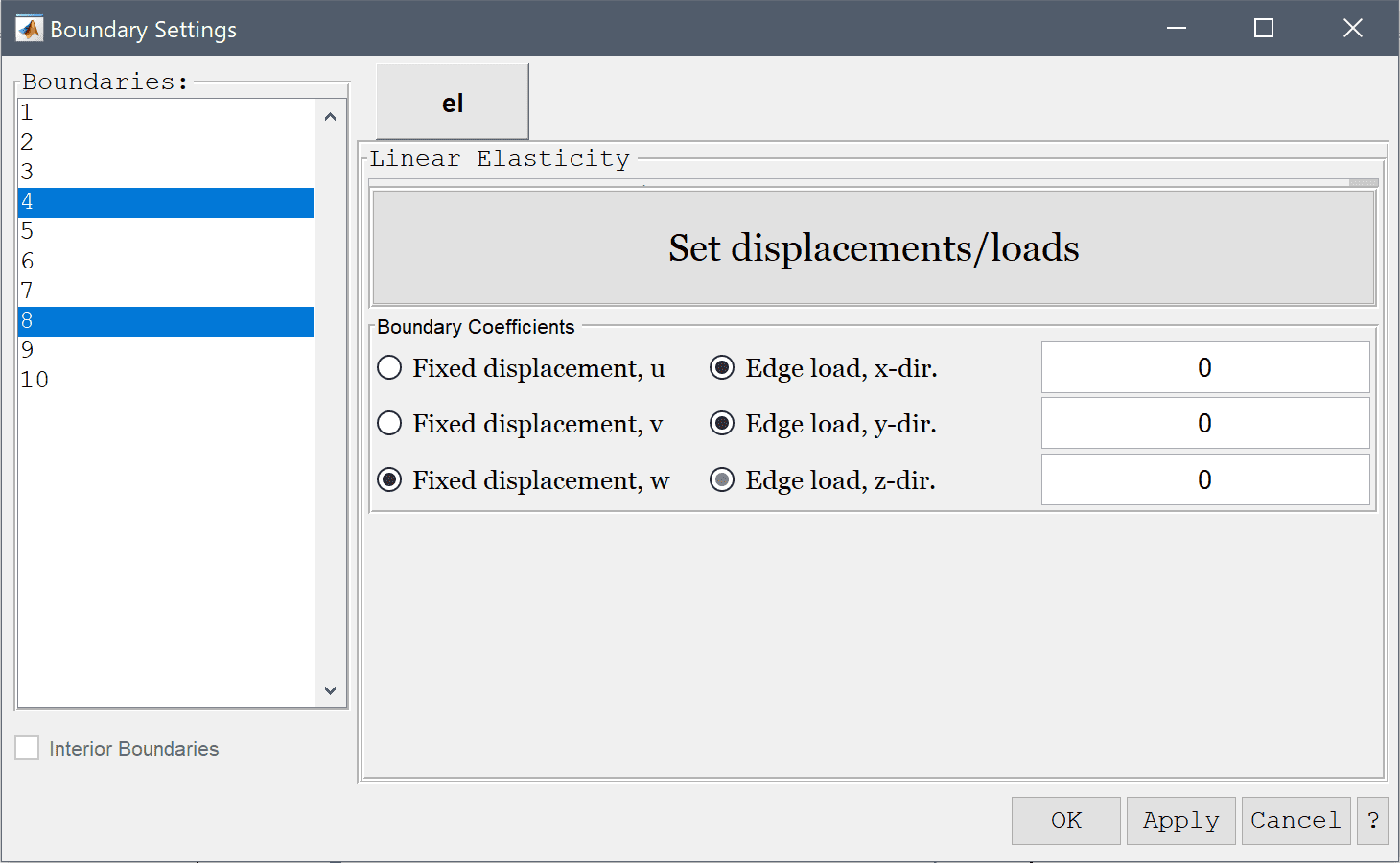
Open the postprocessing settings dialog box and select the z-component of the stress to visualize.
Press the Go to Y-Z View toolbar button.
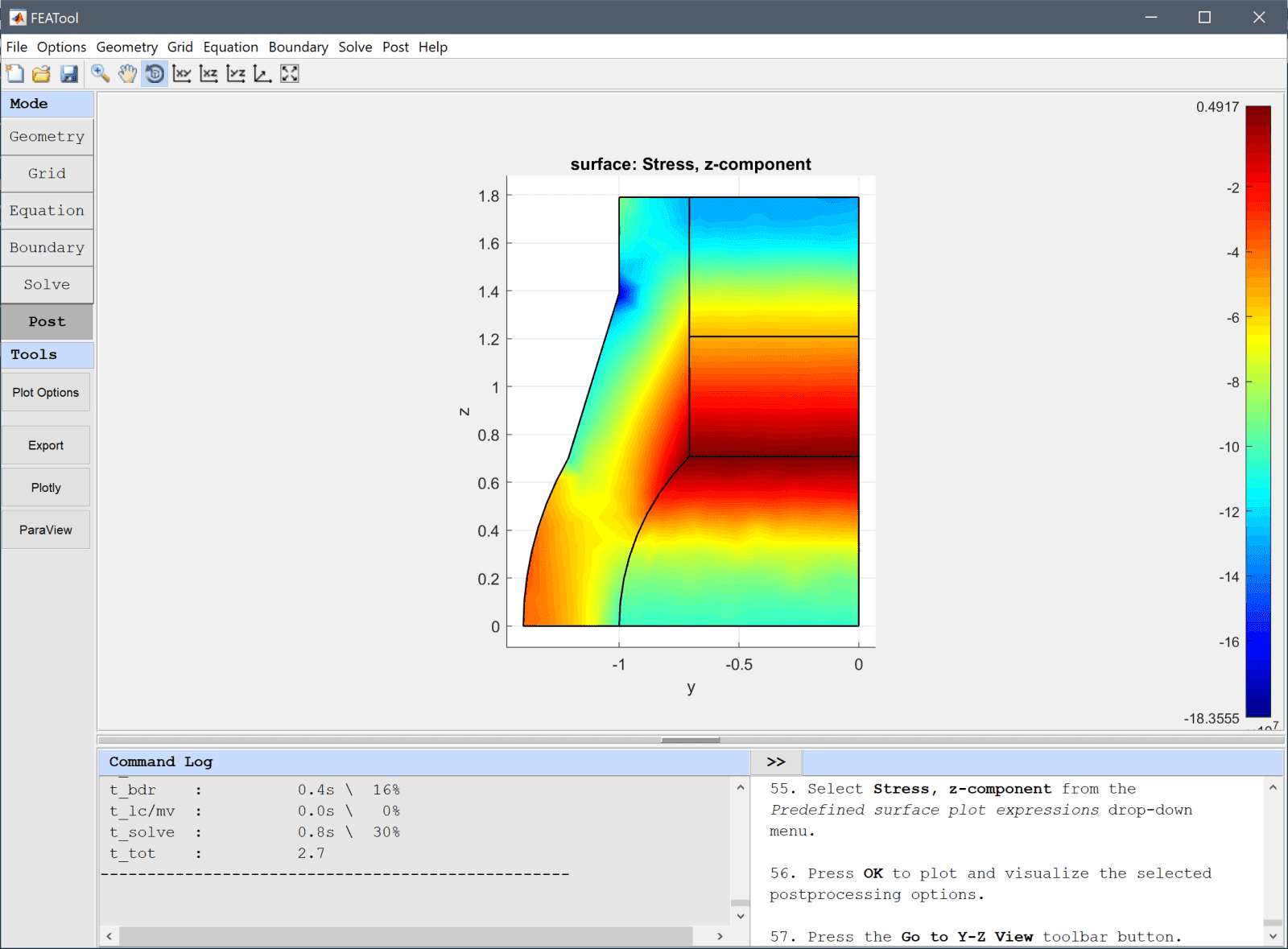
The stress at the inner point (-1, 0, 0) should be evaluated and compared to the reference value.
-1 into the Evaluation coordinates in x-direction edit field.0 into the Evaluation coordinates in y-direction edit field.Enter 0 into the Evaluation coordinates in z-direction edit field.
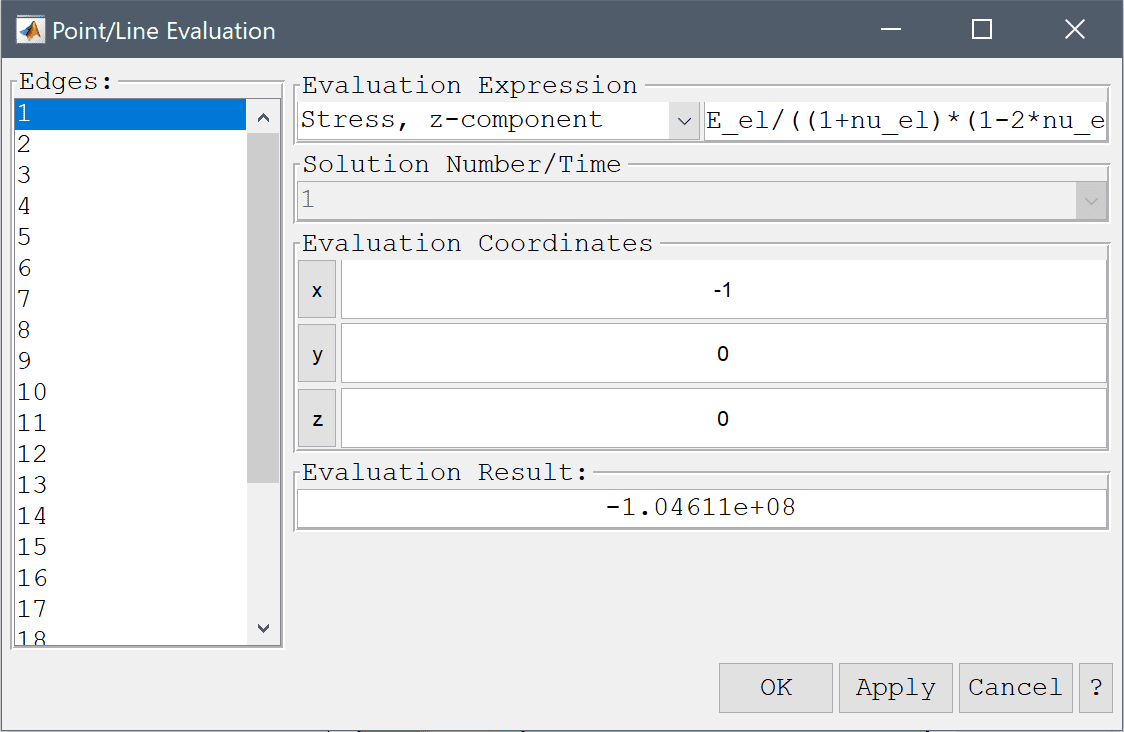
The stress evaluated in the point compares well to the reference value of -105·106 Pa.
The temperature loading of tapered cylinder structural mechanics model has now been completed and can be saved as a binary (.fea) model file, or exported as a programmable MATLAB m-script text file, or GUI script (.fes) file.
[1] NAFEMS publication TNSB, Rev. 3, The Standard NAFEMS Benchmarks, LE11 Solid Cylinder/Taper/Sphere - Temperature Loading Benchmark, 1990.